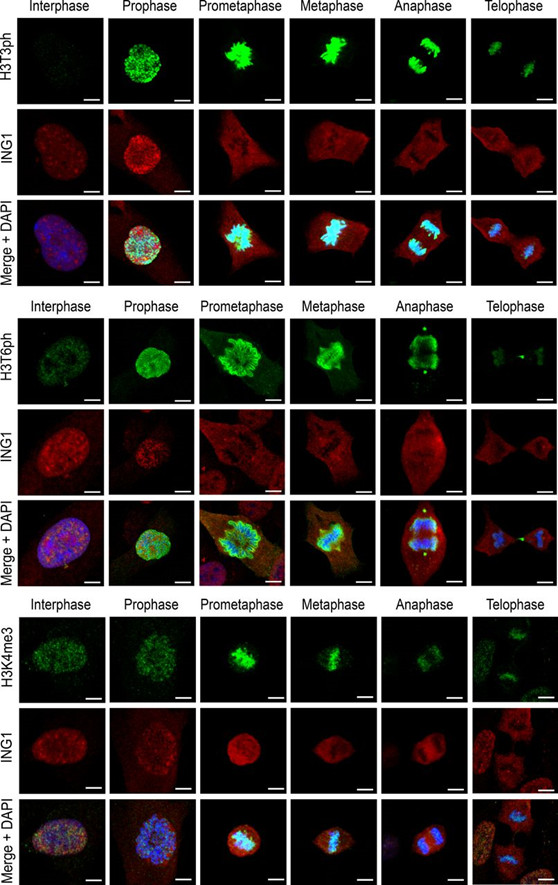Not only genes contain the information for living beings. The histones are DNA-associated proteins that undergo heritable modifications and are able to influence gene expression indirectly. This is termed epigenetics, a concept less well known, but not less important than genetics.
 Researchers at the Centro Nacional de Biotecnología of the CSIC (CNB-CSIC), in collaboration with scientist from University of Colorado and University of North Carolina (USA) have examined how these changes interact and are combined so that the cell can perform two apparently conflicting tasks: regulating expression of its genes (during which several proteins must bind to DNA) and undergoing mitosis (for which the genetic material must be free of these proteins). The study, published this month in the journal Nucleic Acids Research, explains how the combination of a stable and a dynamic modification allows the cell to carry out distinct actions in the chromosomes.
Researchers at the Centro Nacional de Biotecnología of the CSIC (CNB-CSIC), in collaboration with scientist from University of Colorado and University of North Carolina (USA) have examined how these changes interact and are combined so that the cell can perform two apparently conflicting tasks: regulating expression of its genes (during which several proteins must bind to DNA) and undergoing mitosis (for which the genetic material must be free of these proteins). The study, published this month in the journal Nucleic Acids Research, explains how the combination of a stable and a dynamic modification allows the cell to carry out distinct actions in the chromosomes.
"During cell division, most genes are not expressed,” explains Karel van Wely, CNB-CSIC researcher and one of the authors of the study. “They must nonetheless be ready to reactivate immediately in the newly formed cells. To ensure that the entire process occurs correctly, histones undergo various modifications throughout the cell cycle." The paper specifically analyses three changes in amino acids in histone H3: the addition of phosphate in H3T6 and H3T3, and triple methylation in H3K4.
The H3T3 and H3T6 modifications are characteristic of the stages in which the cell is dividing. They promote DNA compaction and exclude the chromatin transcription machinery. The H3K4 modification is a mark that is stable throughout the cell cycle and facilitates binding of proteins responsible for the transcription of nearby genes.
A complex network of interactions
The scientists observed that when H3T3 or H3T6 are phosphorylated during cell division, the proteins involved in transcription cannot attach to H3K4. In this way, gene expression is prevented during mitosis, although the H3K4 modification indicates that the genes are activated.
"After division, the new cells need to resume their gene expression as soon as possible. It is therefore important that the H3K4 modification is maintained, although it is masked by the other two changes during division, "explains van Wely.
"We also think that this network of phosphorylations and methylations that interact with each other could be important for preserving the epigenetic information and for assuring that it is inherited correctly by the daughter cell," says the scientist.
- Gatchalian J, Gallardo CM, Shinsky SA, Ospina RR, Liendo AM, Krajewski K, Klein BJ, Andrews FH, Strahl BD, M van Wely KH, Kutateladze TG, Chromatin condensation and recruitment of PHD finger proteins to histone H3K4me3 are mutually exclusive. Nucleic Acids Res. 2016 doi: 10.1093/nar/gkw193






